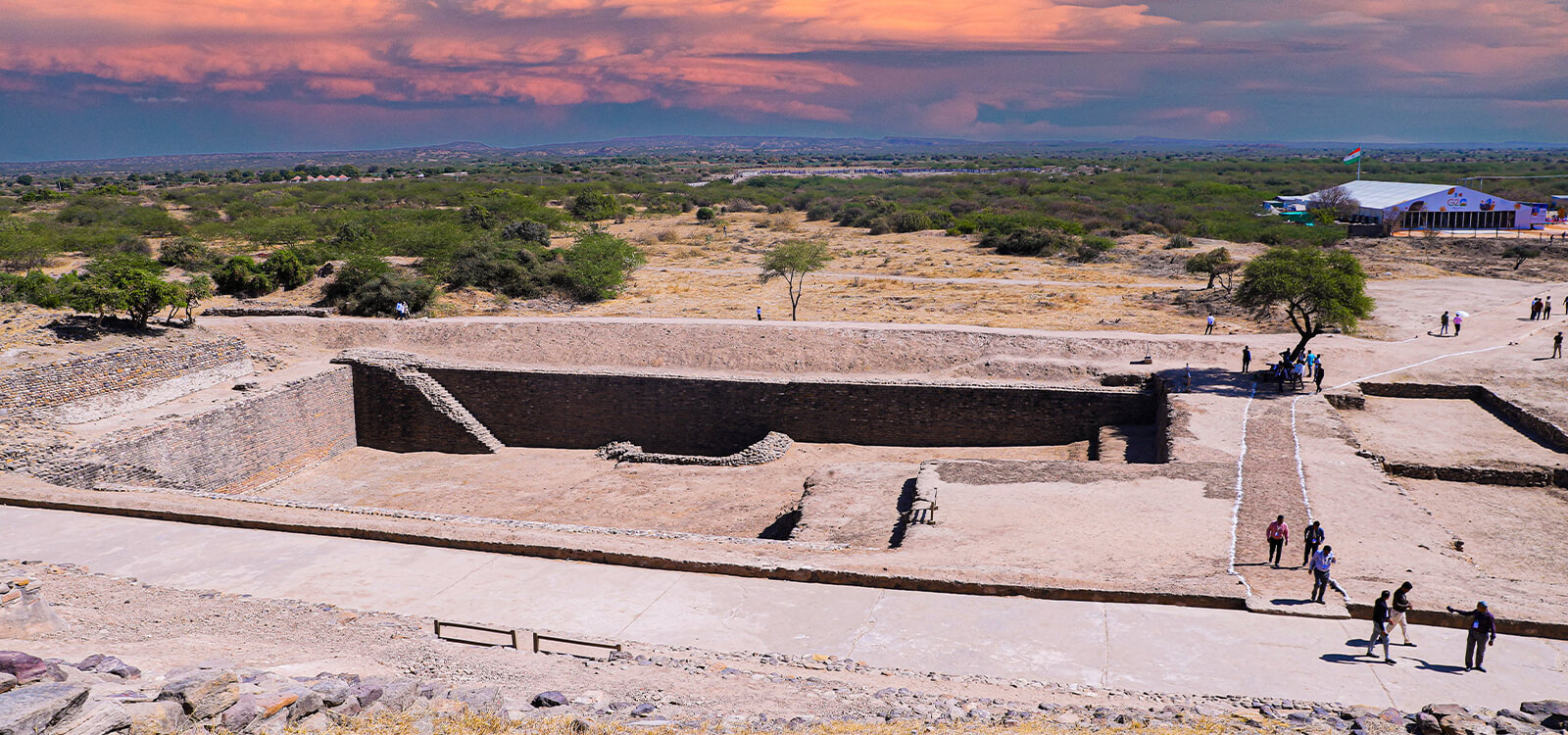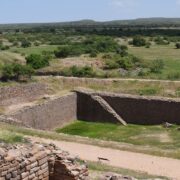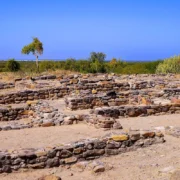Dholavira: Lesser Known Ancient Wonder of the World
KNOW IN DETAIL
When we think of the wonders of the ancient world, the Great Pyramid of Giza, the Hanging Gardens of Babylon, and the Colossus of Rhodes come to mind. However, it is a moment of immense joy and success to for Dholavira, Gujarat to have bagged a place in the list of “The Most Overlooked Ancient Wonders of the World”
Tucked away in the Kutch District of India, Dholavira stands as a testament to the ingenuity and brilliance of the ancient Harappan civilization site. In the blog below, we delve into the captivating story of Dholavira, Gujarat rise from obscurity to being rightfully hailed as one of the most overlooked ancient wonders of the world.
Unveiling Dholavira's Splendour
This sprawling archaeological Harappan Civilization site, covering nearly 100 hectares of land, is located in the modern Kutch District,Gujarat India. It boasts a meticulously planned walled city and an adjacent cemetery, both brimming with archeological treasures that shed light on the lives of ancient inhabitants.
Within the fortified city, an intricate network of structures reveals a fascinating urban layout. Highlights include a fortified castle with a well-protected Bailey, a religious complex, a middle town, a lower town, a series of reservoirs, and a citadel. The city’s cemetery, situated to the west, features circular and rectangular cenotaphs, offering a glimpse into the burial practices of that era. This exceptional site is equivalent in size to around 140 soccer pitches, making it a vast canvas of ancient history.

Historical Significance and Enigmatic Legacy
The Indus Valley Civilization, known for its remarkable urban planning and technological advancements, left behind a script that remains one of the greatest unsolved mysteries of the ancient world. The writing system, evident in numerous artefacts, has long intrigued scholars. Dholavira’s Sign Board, a prominent example of this script, is crucial for its potential to unlock the meanings behind these ancient symbols. This artefact could be the key to deciphering a language that has remained silent for thousands of years, offering a new understanding of the Harappan culture.
The Sign Board itself is a remarkable piece, both in terms of its physical characteristics and historical value. It is composed of ten large-sized characters, each carefully chiselled into a sizable slab of wood. Over time, the wood has eroded, but the imprints of these symbols remain distinct, a testament to the craftsmanship of the Harappans. The characters, etched with precision, are large and clearly visible, indicating their importance, possibly as a public display or a significant marker.
In terms of texture, the weathered surface of the sign board hints at the harsh environmental conditions it withstood over thousands of years. Despite this, the inscriptions have retained their form, offering a tangible link to the past. The symbols, composed of lines and geometric shapes, exhibit a stylistic consistency that suggests a sophisticated and standardised writing system.
The study of the Sign Board opens doors to a more comprehensive exploration of this ancient civilization. Moving from the script to the society, we gain valuable insights into the daily life, beliefs, and intricate social structures that characterised the Harappans, as reflected through their enduring symbols and artefacts.

Dholavira holds paramount importance in India’s historical narrative as the nation’s most prominent archaeological site associated with the Indus Valley Civilization. Located near the village of Dholavira in the Kutch District of Gujarat, the site sprawls across Khadir island in the Great Rann of Kutch and is nestled within the protective embrace of the Kutch Desert Wildlife Sanctuary.
More than just an archaeological site, Dholavira is a portal to understanding the lives and achievements of the people who once walked its streets. Evidence of active trade with contemporary civilizations, the architectural finesse of its structures, and the remnants of a sophisticated water management system all speak volumes about the accomplishments of the city’s inhabitants. Interestingly, it’s speculated that the city may have had access to the sea, a connection lost as sea levels changed over time, transforming the landscape.
The City's Unanswered Mysteries
Despite the wealth of information unearthed, Dholavira is not without its mysteries. The reasons behind the city’s eventual abandonment remain a subject of historical speculation. Some theories propose an eastward migration due to harsh climate conditions on Khadir Island, which made life increasingly difficult. The city’s decline, however, only adds to its enigma, leaving historians intrigued by the narratives that remain untold.
Archaeological Rediscovery
Dholavira’s journey from anonymity to acclaim took a significant step in 1989 when R.S. Bisht, an esteemed archaeologist from the Archaeological Survey of India, initiated a series of excavations. These excavations, carried out between 1990 and 2005, unveiled the city’s layered layout – a lower town, a quadrangular middle town, and a fortified citadel. The latter housed the city’s elite and governing bodies. The discovery of a stadia-like ceremonial ground and an intricately planned water system further showcased the city’s advanced urban planning.
Notable Discoveries and Distinct Features
Dholavira stands apart from its Harappan counterparts due to its unique construction primarily using stones rather than bricks. This distinctive choice of building material lends the city an enduring quality that has withstood the test of time. Its sophisticated water management system, a marvel of ancient engineering, demonstrated a profound understanding of harnessing and conserving water resources in a parched landscape.
Preserving the Past for the Future
The ruins of Dholavira, constructed predominantly from stone, have managed to withstand the passage of time. Notably, R.S. Bisht made the commendable decision to halt extensive excavations in order to preserve the remaining ruins in their authentic state. Additionally, being situated within a protected area ensures that Dholavira remains shielded from various forms of human intervention. The responsibility of safeguarding this historical treasure now rests with the Archaeological Survey of India, ensuring that Dholavira’s legacy endures.
As the world unearths more of its past, sites like Dholavira emerge as jewels, reminding us of the astonishing achievements of ancient civilizations. Dholavira’s inclusion in the list of “The Most Overlooked Ancient Wonders of the World” by World Atlas is a testament to its remarkable historical significance, architectural brilliance, and the mysteries it continues to unravel. This ancient wonder invites us to explore its corridors, imagine its bustling streets, and reflect on the legacy of a civilization that has left a special mark on human history.
Experience the incredible – Dholavira, Gujarat – UNESCO Heritage site that beckons with a rich legacy. Plan your visit and book your stay at EVOKE Dholavira to immerse yourself in history.





